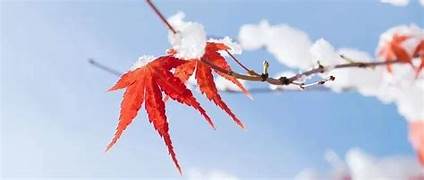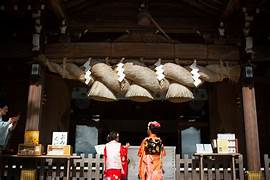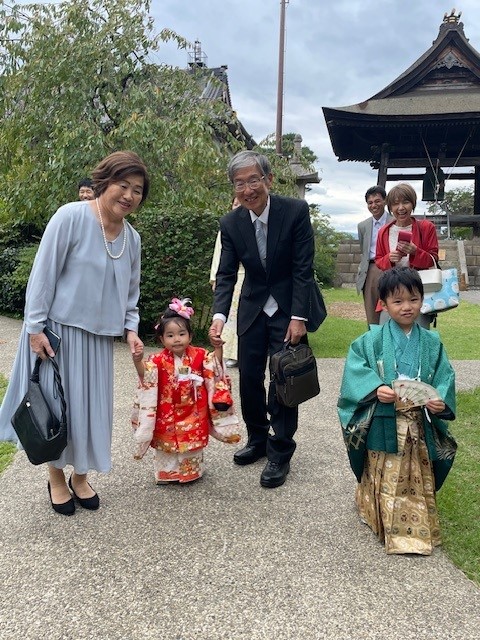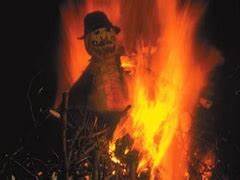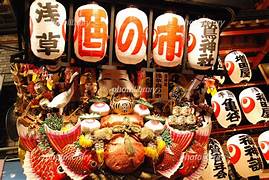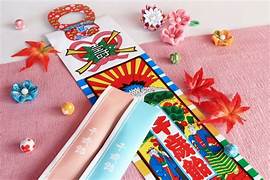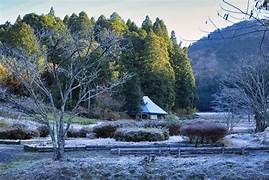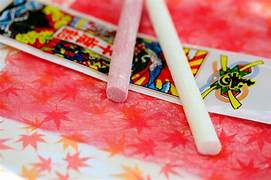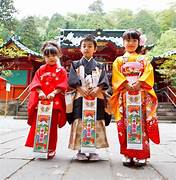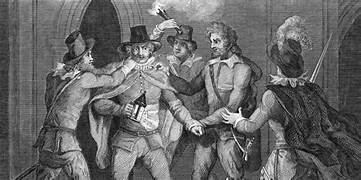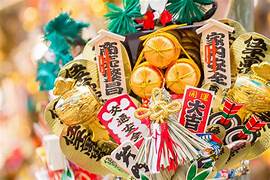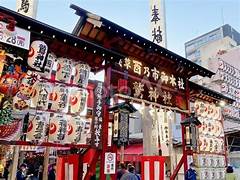By Mitsue Finch Uchida
☆ 日本語・多言語の人材紹介派遣はアクセスアポイントメントへご相談ください Access Appointments for Japanese speaking recruitment
(Please scroll below for the English version)
11月の和名は「霜月」。その名の通り霜が降りる頃で秋から冬へと季節が大きく移る月です。二十四節気では「立冬」(11月7日頃)と「小雪」(11月22日頃)が含まれ、暦の上では冬の始まりです。
日本の行事では子どもの健やかな成長を願い晴れ着に身を包んで神社を参拝する「七五三」があり、境内で千歳飴を手にした子どもたちの笑顔は、冷たい空気の中に温かな喜びや明るさを添えてくれますね。
以前からどうして「七五三」が11月15日になったのかと不思議でしたが、どうやら、一つの説は、将軍徳川綱吉の息子である徳松は、非常に身体が弱い子供だった為に11月15日に健康祈願をしたところ、それから5歳まで無事に育ったので、そこから11月15日が子供の健康と成長を祈願する日となり、それが今の七五三の日になったとされています。
さて、毎年11月5日にイギリス全土で行われる「ガイ・フォークス・ナイト(Bonfire Night)は400年以上の歴史のあるお祭りです。1605年に起こった火薬陰謀事件を記念して行われます。これは、ガイ・フォークス(Mr)が国王を暗殺しようとした事件にちなみ、
子供たちがガイ・フォークスの藁人形を作り、路上で通行人から募金してもらっては花火を買い、その藁人形をもやし、皆が焚火を囲んで温かい飲み物を手に冬を迎える前のイベントとして大人、子供が皆一緒に楽しみます。
今では、各地の公園では、晩秋の空に大輪の花火打ち上げられ、日本の花火は納涼で夏が定番ですが、イギリスは寒い時に花火が打ち上げられるということで、初めて体験した時は驚きましたがこれまた風情があっていいものですね。
皆さまは「酉の市」をご存知でしょうか。江戸中期に浅草の酉の市は、当時賭博が禁止されたことや東隣に新吉原を控えていたことで一層浅草でのこの市が、賑わいを増していったようです。次第に、大判小判、おかめの面などを飾った「縁起熊手」もより大きく華やかになり、
それらは、財をかき込み、福をかき込もうと商売繁盛を願う人々に、益々もてはやされることになります。また、お客をかき込むという縁起をかついで、愛らしいかんざし熊手が吉原などで人気となって、縁起物の熊手は多種多様となって行ったと言われていますが、最近は熊と言えば日本各地でクマによる人身被害が相次いでいるのを受け、イギリス政府でも日本へ渡航する人たちに対し、クマの目撃情報があった地域を訪れる場合は、1人で歩くことを控えるなど注意を呼びかけているようで、昨今のInboundの観光客が急増していることを受け、いまや国内だけのニュースかと思いきや国際ニュースになってきていますね。
霜月、これから本格的な寒さに備え、身体を芯から温め、ガイフォークスの花火を観賞してはいかがでしょうか。そしてこの1年を振り返りながら夜空に輝く花火に世界の平和をねがってみましょう。素敵で元気な11月をお過ごしください。
アクセスアポイント一同より
*** ここでいつもの愚俳句と川柳 ***
七五三 孫の晴れ着は 飴欲しさ
ペニーフォー ガイズ、ナウ ナッシング キャンバイ
(Penny for guys now nothing can buy)
****11月のイベント紹介****
* 11月28日(金)&29日(土) 【ロンドン能楽鑑賞】 のご案内
ロンドンのKings Cross駅から徒歩5分にあるコンサート会場 Kings Placeで、
観世流の人気能楽師 清水寛二氏ら6名の能楽師ほかによる2日間の能公演が開催されます。女性に扮した主人公の芭蕉の精が、全ての生き物と人間の平等を語る金春禅竹による傑作「芭蕉」は、歴史上初の海外公演。そして、能楽師の間でもとりわけ人気が高く、オペラ作品「Matsukaze」にもなった世阿弥による名作「松風」は、1959年パリ公演以来の海外公演となります。
日時: 2025年11月28日(金)@プレトーク18:00、パフォーマンス19:30
11月29日(土)@ワークショップ16:00、トーク18:00、パフォーマンス19:30
会場: Kings Place Music Foundation 90 York Way, London N1 9AG
チケット予約 ・イベント詳細
↑ チケットご購入はこちらで「JA15」で15%割引をゲット!
*11月12日(水) 午後8時~9時(UK時間)
演題:『マクロ経済学から見た為替相場入門編~』
講師: Mr 鮎川 哲史 SOLUTIONS LAB CONSULTING London U.K. 代表
こちらのリンクよりお申し込みください。(100名様まで)
*11月4日(火)第34回ビジネス日本語スピーチコンテスト (弊社も長年スポンサーとして審査員でも参加しています!)
●時間:スピーチ3:00-5:30pm 、授賞式6:15-7:00pm、レセプション7:00pm-
●開催場所:ロンドン大学(SOAS): SOAS Gallery Lecture Theatre
*11月4 日(火)- 11月9日(日)ミュージカル「SIX」日本キャスト版公演
英国で誕生し世界中で英国ツアーキャストや現地キャストによる公演が上演され、各地で大ヒットを繰り広げているミュージカル「SIX」の日本キャスト版が本場英国ロンドンでウェストエンドデビューを果たします。
会場:VAUDEVILLE THEATRE(ヴォードヴィル劇場)
上演日時、各キャストの出演スケジュールなどは公式ホームページをご確認ください。
☆ Access Appointments for Japanese speaking recruitment ☆
Access Appointments Saijiki Blog for November(Shimotsuki)2025
By Mitsue Finch Uchida
In Japan, November is known as “Shimotsuki”, meaning the month of frost. True to its name, this is the time when frost begins to appear, marking a clear transition from autumn to winter. According to the traditional Japanese calendar, November includes two of the twenty-four solar terms:
Rittō (the beginning of winter), around 7 November, and Shōsetsu (light snow), around 22 November — the official start of winter.
One of Japan’s cherished traditions during this month is Shichi-Go-San, a celebration held to pray for the healthy growth of children aged three, five, and seven. Dressed in beautiful formal attire, families visit shrines where children,
holding Chitose Ame (thousand-year candy), fill the crisp air with smiles and joy — a heart-warming sight that adds brightness to the chilly season.
I had often wondered why Shichi-Go-San is celebrated specifically on 15 November. One popular theory traces its origin to the Edo period: it is said that Tokumatsu, the son of Shōgun Tokugawa Tsunayoshi, was a frail child. When prayers for his health were offered on 15 November, he went on to grow strong and healthy up to the age of five. Since then, the date became associated with prayers for children’s wellbeing — a tradition that continues to this day.
Meanwhile, here in the UK, Guy Fawkes Night (Bonfire Night) is celebrated every year on 5 November, an event with over 400 years of history. It commemorates the Gunpowder Plot of 1605, when Guy Fawkes and his accomplices attempted to blow up the Houses of Parliament and assassinate the King.
Traditionally, children would make effigies of “Guy” out of straw, take them to the streets to collect coins from passers-by, and use the money to buy fireworks. The effigies were then burned on bonfires, as families and friends gathered around the flames, sharing warm drinks and laughter before the onset of winter.
Today, large firework displays are held in parks and open spaces across the country, lighting up the late autumn sky. In Japan, fireworks are a hallmark of summer festivals, but in Britain, they burst against the cold November air — something that surprised me at first, yet I’ve come to find it wonderfully atmospheric in its own way.
Have you ever heard of “Tori no Ichi”, the “Rooster Fair”? This traditional festival has its origins in the Edo period and is held at various shrines across Japan in November. Among them, the fair at Asakusa became particularly famous. During the mid-Edo period, gambling was prohibited, and because the nearby district of Yoshiwara was a lively entertainment quarter, the Asakusa fair naturally flourished with even greater crowds and excitement.
Over time, the “Engi Kumade” — decorative bamboo rakes adorned with symbols such as gold and silver coins, masks of Okame (the goddess of mirth), and other lucky charms —
grew increasingly elaborate and beautiful. These rakes symbolise the act of “sweeping in” good fortune and prosperity, and merchants in particular came to treasure them as charms for business success.
It is also said that in places like Yoshiwara, small ornamental rakes known as “kanzashi kumade” (hairpin-style rakes) became popular as good-luck items, carrying the same wish to “rake in” customers. As a result, the variety of decorative rakes expanded, each crafted with care and imagination, embodying the festive spirit and the people’s hopes for happiness and prosperity in the coming year.
As we enter Shimotsuki, the month of frost, it’s time to prepare for the true chill of winter — so why not warm yourself from the inside out and enjoy the beauty of Guy Fawkes Night fireworks? While watching the brilliant colours light up the night sky, take a quiet moment to reflect on the past year and wish for peace across the world.
May your November be filled with warmth, good health, and plenty of smiles.
☆ Access Appointments for Japanese speaking recruitment ☆

